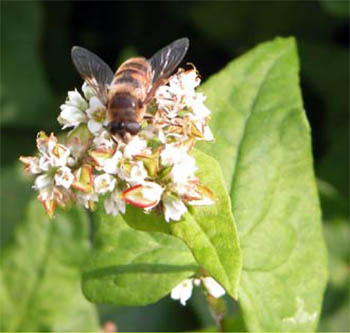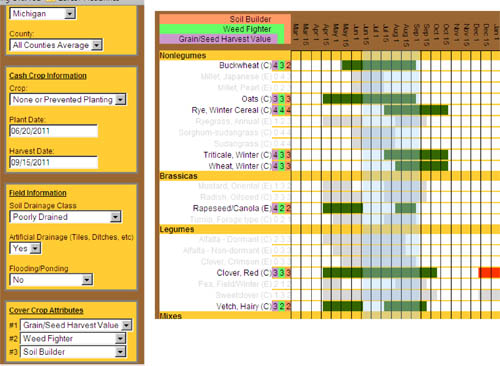Using cover crops for field crop acres that haven’t been planted
The benefits of cover crops for this challenging season.
The 2011 planting season will become the new bookmark for comparing backward spring conditions, but no one wants to be reminded of this every day when travelling past unplanted fields. Planting cover crops in those fields can provide several benefits and can help prepare a field for timely wheat planting this fall.
Cover crops serve many different functions, as shown in Table 1, from helping with weed control to building soil to scavenging nitrogen from manure or nitrogen applications. Some cover crops can be harvested as feed for livestock while other cover crops can be harvested for seed production.
There are many cover crops to choose from, such as legumes, brassicas, broadleaves and grasses, and within each of these categories are several different species. For more on selecting cover crops, see Preventive planting options for cover crops. Please contact your insurance agent if you are planting cover crops into crop insurance acreage.
Table 1. Matching Cover Crop Choices to Function
|
Cover crop function |
Best choices for cover crops |
|
Nitrogen production |
Legumes: red clover, peas, vetch (can be a weed), crimson clover |
|
Nitrogen scavenging |
Summer/fall uptake: oilseed radish and other brassicas (August seeding), oats, sorghum-sudangrassWinter/spring uptake: rye, winter wheat |
|
Weed suppression |
Fast growing/shading plants: oilseed radish and other brassicas (August seeding), winter rye, buckwheat, sorghum-sudangrass |
|
Soil structure building |
Grasses: oats, barley, rye, wheat, triticale, sorghum-sudangrass, annual ryegrass, or tap root systems such as red clover |
|
Compaction reduction |
Strong tap roots that grow over time: alfalfa, sweet clover, oilseed radish, red clover |
|
Biomass return to soil |
Strong tap roots that grow over time: alfalfa, sweet clover, oilseed radish, red cloverFall seeded: oats, oilseed radish (August seeding) |
|
Erosion protection (wind, water) |
Winter rye, winter wheat, triticale, annual ryegrass, spring cereals seeded early |
|
Emergency Forage |
Fall: oats, barley, wheat, rye, forage brassicasSummer: millets, sorghum, sudangrass, sorghum sudan |
Buckwheat as a cover crop
An example of a cover crop that is of interest to some is buckwheat.

Buckwheat is a short-season cover crop that reaches maturity in about 80 days. In organic production buckwheat helps to
- suppress weeds
- attract beneficial insects such as bees
- extract soil phosphorus that can be utilized by the following crop
- loosen compacted topsoil
Buckwheat will produce seed in as little as six to eight weeks. Buckwheat does not thrive well under hot-dry conditions.
For more information on buckwheat, read the “Buckwheat” section in Managing Cover Crops Profitably, Third Edition or visit Ontario’s Ministry of Agriculture, Food and Rural Affairs Cover Crops: Buckwheat website.
The cover crop decision tool
A new, web-based interactive tool is available to assist in selecting cover crops to include in crop rotations. A project of the Midwest Cover Crop Council, the decision tool gives ratings for various cover crops based on team consensus, including input from research, on-farm experience and practical knowledge.
TheCover Crop Decision Tool can help producers sort through the various cover crops to match specific needs with the cover crop options that are best suited to meet them. The chart below shows results from specific field information and selected preferences.



 Print
Print Email
Email





